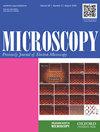Improving the depth resolution of STEM-ADF sectioning by 3D deconvolution
IF 1.8
4区 工程技术
引用次数: 1
Abstract
Although the possibility of locating single atom in three dimensions using the scanning transmission electron microscope (STEM) has been discussed with the advent of aberration correction technology, it is still a big challenge. In this report we have developed deconvolution routines based on maximum entropy method (MEM) and Richardson–Lucy algorithm (RLA), which are applicable to the STEM-annular dark-field (ADF) though-focus images to improve the depth resolution. The new three-dimensional (3D) deconvolution routines require a limited defocus-range of STEM-ADF images that covers a whole sample and some vacuum regions. Since the STEM-ADF probe is infinitely elongated along the optical axis, a 3D convolution is performed with a two-dimensional (2D) convolution over xy-plane using the 2D fast Fourier transform in reciprocal space, and a one-dimensional convolution along the z-direction in real space. Using our new deconvolution routines, we have processed simulated focal series of STEM-ADF images for single Ce dopants embedded in wurtzite-type AlN. Applying the MEM, the Ce peaks are clearly localized along the depth, and the peak width is reduced down to almost one half. We also applied the new deconvolution routines to experimental focal series of STEM-ADF images of a monolayer graphene. The RLA gives smooth and high-P/B ratio scattering distribution, and the graphene layer can be easily detected. Using our deconvolution algorithms, we can determine the depth locations of the heavy dopants and the graphene layer within the precision of 0.1 and 0.2 nm, respectively. Thus, the deconvolution must be extremely useful for the optical sectioning with 3D STEM-ADF images.利用三维反褶积提高STEM-ADF剖面的深度分辨率
尽管随着像差校正技术的出现,人们已经讨论了使用扫描透射电子显微镜(STEM)在三维定位单个原子的可能性,但这仍然是一个巨大的挑战。在本报告中,我们开发了基于最大熵方法(MEM)和Richardson–Lucy算法(RLA)的去卷积例程,这些例程适用于STEM环形暗场(ADF),通过聚焦图像来提高深度分辨率。新的三维(3D)去卷积程序需要覆盖整个样本和一些真空区域的STEM-ADF图像的有限散焦范围。由于STEM-ADF探针沿光轴无限延长,因此使用倒数空间中的2D快速傅立叶变换在xy平面上进行二维(2D)卷积,并在真实空间中沿z方向进行一维卷积,从而执行3D卷积。使用我们新的去卷积程序,我们处理了嵌入纤锌矿型AlN中的单个Ce掺杂剂的STEM-ADF图像的模拟焦点序列。应用MEM,Ce峰沿深度明显局部化,并且峰宽度减小到几乎一半。我们还将新的去卷积例程应用于单层石墨烯的STEM-ADF图像的实验焦点序列。RLA给出了平滑且高P/B比的散射分布,并且可以容易地检测石墨烯层。使用我们的去卷积算法,我们可以分别在0.1和0.2nm的精度内确定重掺杂剂和石墨烯层的深度位置。因此,反褶积对于具有3D STEM-ADF图像的光学切片必须非常有用。
本文章由计算机程序翻译,如有差异,请以英文原文为准。
求助全文
约1分钟内获得全文
求助全文
来源期刊

Microscopy
工程技术-显微镜技术
自引率
11.10%
发文量
0
审稿时长
>12 weeks
期刊介绍:
Microscopy, previously Journal of Electron Microscopy, promotes research combined with any type of microscopy techniques, applied in life and material sciences. Microscopy is the official journal of the Japanese Society of Microscopy.
 求助内容:
求助内容: 应助结果提醒方式:
应助结果提醒方式:


